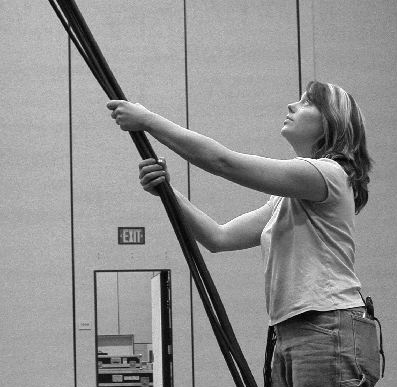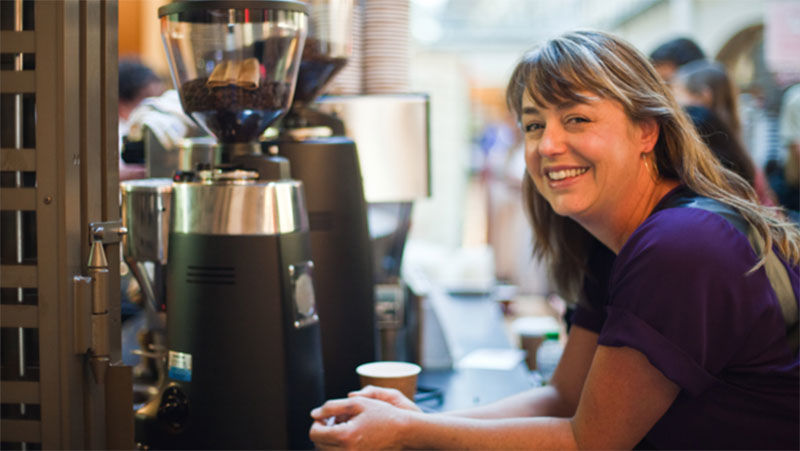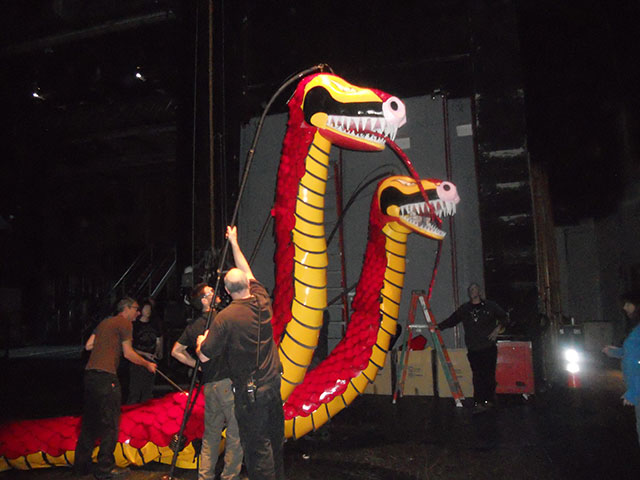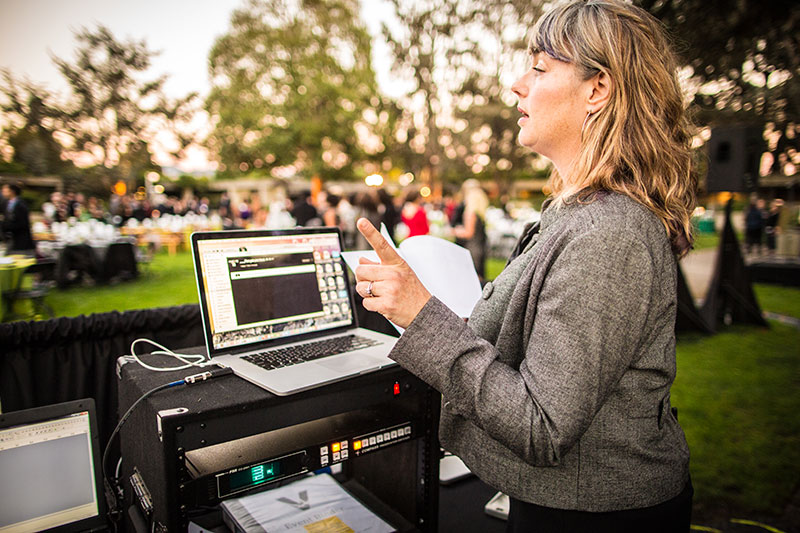The backstage area at San Francisco’s War Memorial Opera House is exactly as cool as you’d think. Everything here is tilted, huge, or floodlit, and the roof is invisible.
Dawn Roth-Golden is walking coolly across the stage. Of the Opera House. It’s clearly her accustomed habitat, and she obviously knows where she’s going and why, but it’s still the stage of the Opera House.
“If a handkerchief begins a scene in the pocket of a performer’s costume,” she explains, “and they walk onstage, drop it, and leave without it, then that handkerchief is wardrobe.” I gather my forces and follow; she’s explaining her job as a craftsperson in the props department here, where she has worked on and off for 19 years, and where, she says, it’s her joy to actually build things, to construct and sometimes design them from nothing. “On the other hand,” she continues, “if the handkerchief begins the scene onstage, and the performer walks out, picks it up, and leaves the stage holding it, then it’s a prop.”
And if it’s a prop, then Dawn Roth-Golden probably made it herself.

Today, as she leads me up stairways and into so many elevators and warrens of offices and workshops that I lose any sense of direction, she motions me over to a railing. We look down onto the world-class stage we’d just been standing on, partially set for the current production of Lucia di Lammermoor. “So we’re on the 2-F shelf right now. The ‘F’ stands for fly-floor, so there’s 2-F, 3-F, 4-F, and then ‘the grid’ is above there.” She points up, and we can see curtains, screens, pipes, and wires, going up higher than the eye can track. Roth-Golden tells me the larger pipes hold electrical wires, and the smaller ones hoist both scenery and the drapes that create the proscenium. “They create the depth,” she says.




